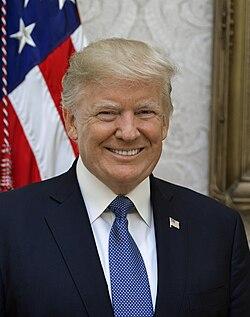Former President Donald Trump is reportedly preparing an executive order aimed at safeguarding college sports, which he describes as facing a significant “threat.” According to sources, the move seeks to address ongoing challenges within collegiate athletics, including issues related to athlete compensation, governance, and the influence of professional leagues. The proposed directive signals Trump’s renewed involvement in the national sports arena, as debates over the future and integrity of college sports continue to intensify.
President Trump Moves to Protect College Sports Amid Growing Financial and Regulatory Challenges
In a bold effort to safeguard the future of collegiate athletics, President Trump is reportedly crafting an executive order aimed at shielding college sports from mounting financial pressures and increased government oversight. Sources close to the administration reveal that the initiative comes as a direct response to what the President describes as a “threat” to the traditional model of college sports, fueled by escalating costs, regulatory constraints, and the evolving landscape of athlete compensation. The proposed order seeks to provide schools and athletic programs with greater flexibility and support, ensuring that these institutions can continue to thrive without compromising their core educational missions.
Key points outlined in the forthcoming executive order are expected to include:
- Reduction of federal regulations that restrict program funding and operational autonomy.
- Enhanced protections for athletes’ scholarships and eligibility status amid changes to Name, Image, and Likeness (NIL) policies.
- Financial incentives for universities to maintain sports programs deemed critical to community engagement and student development.
| Challenge | Proposed Executive Order Response |
|---|---|
| Rising operational costs | Granting budgetary relief options |
| Regulatory barriers | Streamlining compliance requirements |
| NIL complexities | Clarifying athlete eligibility standards |
Analyzing the Potential Impact of the Executive Order on NCAA Policies and Athlete Compensation
The executive order reportedly aims to assert federal oversight over NCAA governance, especially concerning rules around athlete compensation. This intervention could fundamentally shift the balance of power, potentially empowering athletes to negotiate endorsements and sponsorships without compromising their collegiate eligibility. Critics argue this may dismantle parts of the current NCAA regulatory framework, while supporters suggest it could unlock new revenue streams and rights for student-athletes long suppressed by existing policies.
Key dimensions of the order’s potential impact include:
- Compensation Rights: Athletes may receive greater freedom to monetize their name, image, and likeness (NIL) without NCAA-imposed restrictions.
- Recruitment Practices: Federal guidelines could recalibrate recruiting standards, promoting transparency but raising concerns about fairness.
- Compliance and Enforcement: A federal directive might establish new enforcement mechanisms independent of traditional NCAA control, potentially leading to legal challenges.
| Aspect | Potential Outcome |
|---|---|
| Athlete Autonomy | Expanded NIL rights and endorsement opportunities |
| NCAA Authority | Possible reduction in policy control and enforcement power |
| Legal Landscape | Increased federal involvement may spark litigation |
The executive order seeks to increase federal oversight of NCAA governance, particularly in areas involving athlete compensation. Its key impacts may include:
- Athlete Autonomy: Student-athletes could gain expanded rights to profit from their name, image, and likeness (NIL), allowing them to secure endorsements and sponsorships without risking collegiate eligibility.
- Recruitment Practices: Federal guidelines might revamp recruitment standards to enhance transparency, though this could also introduce debates about fairness across programs.
- NCAA Authority: The NCAA’s traditional control over policy enforcement could be diminished, with new federal enforcement mechanisms introduced, potentially leading to legal challenges.
Overall, the order aims to empower athletes and modernize collegiate sports governance but may disrupt long-standing regulatory frameworks and provoke significant legal and institutional responses.
Experts Weigh In Recommendations for Ensuring Fairness and Sustainability in Collegiate Athletics
Leading analysts and former collegiate athletes emphasize the need for a multi-faceted approach to uphold fairness while ensuring the financial and ethical sustainability of college sports programs. Central to their recommendations is increased transparency in athlete compensation models, with an emphasis on creating equitable opportunities regardless of sport or gender. Experts suggest that stringent oversight mechanisms must be implemented to prevent exploitation and maintain competitive balance across institutions.
Among the most frequently advocated measures are:
- Standardized athlete compensation guidelines to regulate endorsements and NIL (Name, Image, and Likeness) deals.
- Enhanced academic support ensuring athletes graduate and transition successfully beyond sports.
- Environmental sustainability initiatives integrated into athletic department operations, focusing on resource efficiency and waste reduction.
| Recommendation | Impact | Priority Level |
|---|---|---|
| Transparency in NIL Deals | Ensures fairness and equal access | High |
| Academic Support Programs | Promotes athlete career success | Medium |
| Green Initiatives in Athletics | Reduces carbon footprint | Low |
Final Thoughts
As President Trump moves forward with his proposed executive order aimed at preserving college sports, the coming weeks will reveal how this initiative might reshape the landscape of collegiate athletics. Stakeholders from universities, athletes, and governing bodies are expected to closely monitor the administration’s actions as discussions about the future of college sports intensify. With debates around athlete compensation, program funding, and regulatory oversight ongoing, this executive order could mark a significant moment in the evolving relationship between government and collegiate athletics.

